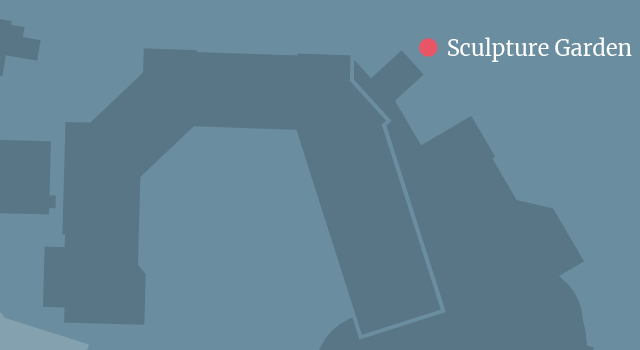
A remarkable art collection
Introduction
@ The Sculpture Garden
Click the play icon to listen to this part of the tour or read the accompanying text below.
You can also click here to return to the welcome map »
or here to jump to the next location »
Thank you for taking an interest in the contemporary art collection of the Hamilton Princess Hotel & Beach Club. The hotel, euphemistically called The Pink Palace, opened its doors in 1885. Since then, royal visitors, celebrities, and guests from around the world have called the hotel ‘home’ for over a century. The Green Family purchased the hotel in 2012 and immediately started renovations by introducing their contemporary art collection. The collection is remarkable, featuring a museum level checklist of key modernists, American and British Pop artists, and contemporary provocateurs.
Bermuda’s homes have a particular architectural vernacular, or language of expression, which can be considered as the Island’s first art form. At the hotel’s entrance, in the context of nearby historical and modern buildings, we can identify classic features, like window eyebrows, decorative balconies, the white roof, and of course the distinct pink hue. These elements have maintained over time and lend to the authenticity of the hotel’s structure.
When standing in the front garden, with Sylvestre Gauvrit’s blue wave-like sculpture ‘Princesse des Airs’ in polished stainless steel, we experience an evocative juxtaposition, or contrast, between post-modern art and an historical building. This is an effect experienced throughout the hotel, as old features, such as antique hand-blown glass fixtures, hand hewn antique mirrors, and mahogany paneling exist side by side contemporary artwork.
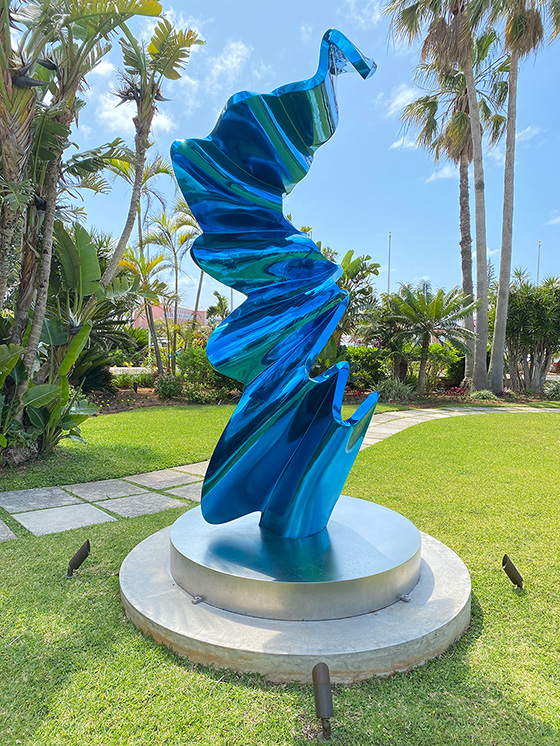
Ahead, we see Yue Minjun’s, Warrior #10. Using exaggeration and humour to shed light on meaningful messages is inherent to the portfolio of satirist Yue Minjun. Consider the title of the artwork to the depiction of the figure, which presents the artist’s interpretation of his own face and body. What is the ‘warrior’ missing? What is his cause? Is the pose an act of freewill or an act of resistance or a sign of resignation?
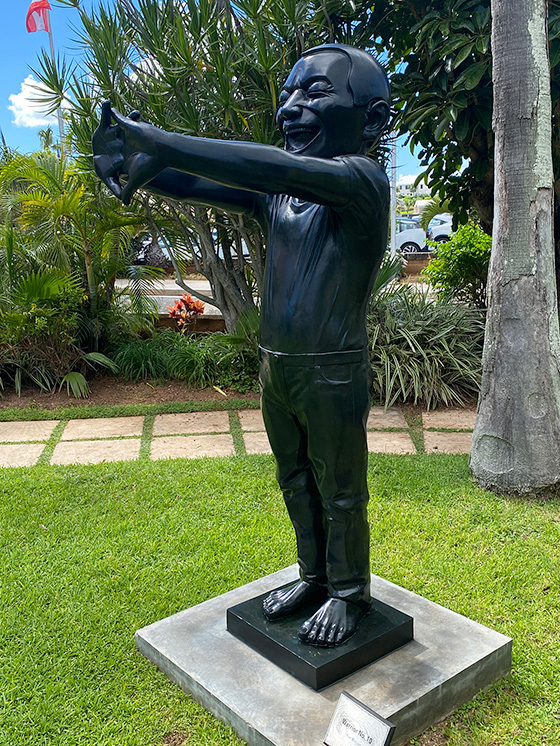
Julian Opie makes a bold statement with his freestanding cement portrait of Nathaneel Mitchell-Blake, a successful British sprinter. In 2024 Opie developed a sprinter series in partnership with the British Olympic Association and likely this homage to Nathaneel emerges from this. The simplicity of facial details serves as an evocative contrast to the other artists featured in the front garden. How many Opie’s can you find in the collection?
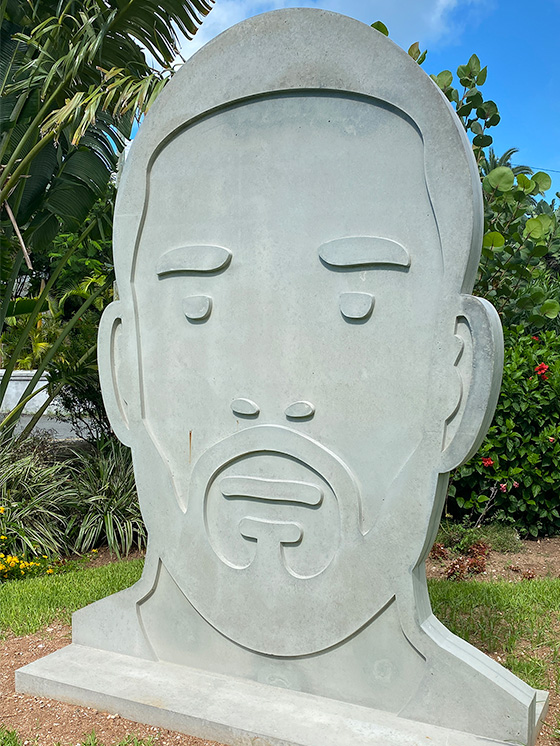
To the right, Daniel Arsham’s, Astronaut. Take a moment to observe the object from a distance. This life-sized bronze figure is a realistic crafting of the astronaut in proper NASA gear, with particular attention given to the patina and surface qualities of the sculpture that augment this realism. The empty footprint is an uncanny suggestion of movement, which is articulated beautifully after a rain. Consider the artist’s intentions with the eroded ‘chunks’ missing from the figure and the insertion of chromed prisms. Is this American artist Arsham commenting on the past, present, or future?
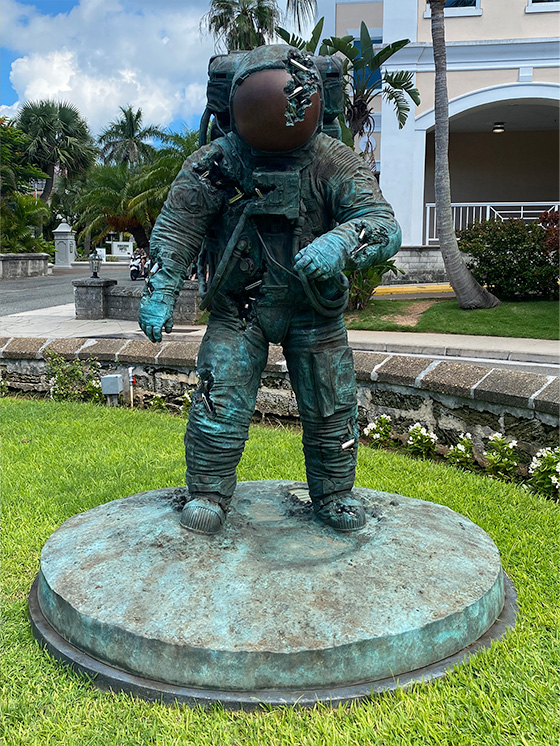
Robert Indiana’s ‘Love’ effectively sets the tone for the art collection experience. We may know this artwork already from our travels to New York or Chicago and this familiarity is comforting. If we are unfamiliar with the work, we can understand the simple, direct message, arranged in large scale wood block letters from child’s play.
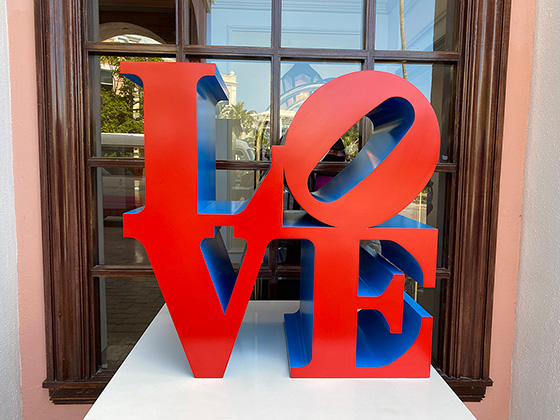
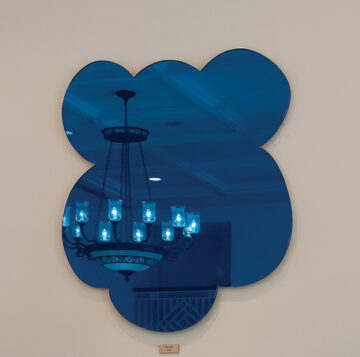
Jeff Koons Spotlight
Inside the lobby, above the fireplace mounted onto huge slabs of polished white marble is a splash of dazzling blue in a comical shape that is called “Monkey (Blue)”, although many see other characters. Here is Jeff Koons having some fun with a beautiful material that appears delicate and precious while presenting a simple, undetermined shape. Contemporary pop art is very much in this moment of the intersection of art- design- technology. Today’s designs may also remind us of our childhood, or reading clouds, or playing with letters and water.
Our art experience has begun…
Where it is
